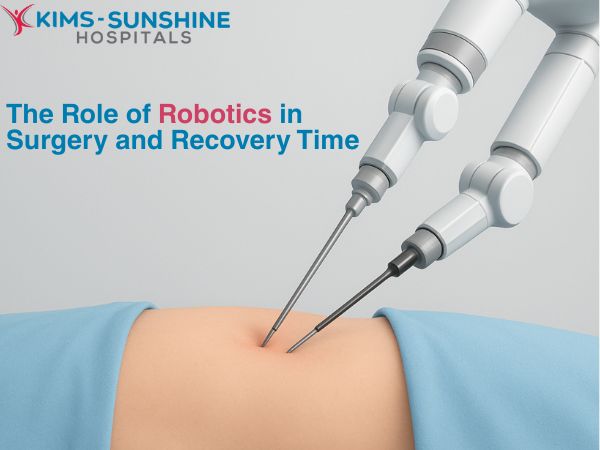
The Role of Robotics in Surgery and Recovery Time

With the latest technological advancements in the field of medical science, robotic surgery is gaining a firm foothold. Today, surgeons are being assisted by a robotic device which comes with a robotic arm that carries tiny surgical instruments. With the help of a viewing screen and some controllers, the surgeon performs the operation. Welcome to the world of robotic surgery! Robotic surgeries are fast gaining popularity because of the success rate of robotic surgeries. Let us delve into the basics of understanding why robotic surgery is better for recovery.
Robotic-assisted surgery vs traditional surgery
Unlike traditional surgery, robotic-assisted surgery has proved to be more advantageous. Robotic surgeries allow doctors to perform various complex procedures with more precision, control, and flexibility, unlike traditional surgeries. Severe blood loss that is often associated with traditional surgery is not incurred in a robotic surgery as most of the robotic-assisted surgeries are performed through a small incision. Very rarely does it require open surgeries. Although traditional surgery is still the preferred mode of conducting operations, the benefits of robotic surgery for faster healing cannot be overlooked.
How robotic surgery works in modern hospitals
Robotic surgeries are carried out by professionally qualified surgeons who are adequately trained to handle such surgeries. In a robotic-assisted surgery, a surgeon remains at a console while manipulating tiny, surgical instruments by means of robotic arms. The surgeon gets a clear picture of the entire procedure in a viewing screen which helps in easy navigation of the surgical instruments. Generally, a robotic surgery system includes both a camera arm and mechanical arms, having tiny surgical instruments attached to them. The viewing screen offers a highly magnified, 3-D view of the surgical area.
Does robotic surgery reduce hospital stay?
Before opting for robotic surgery, it is important to understand how robotics help in surgery recovery. In comparison to conventional surgery, robotic-assisted surgeries offer faster recovery time and shorter stays in hospitals. Since these surgeries require smaller incisions and rarely open surgeries, there is less blood loss. As a result, chances of post-surgical infections get considerably reduced, with fewer complications. The entire patient experience after robotic surgery is less painful, with minimal tell-tale scars.
Robotic surgery pros and cons for patients
Robotic-assisted surgeries offer many advantages over traditional surgeries. Some of the benefits of robotic surgery are:
- Less painful
- Minimal scars
- Lower risk of infections
- Faster recovery period
- Shorter hospital stays
- Decreased blood loss
However, there’s a flip side to robotic surgeries too! Sometimes, complications may arise during a robotic-surgery that may require the surgeon to opt for an open procedure with a larger incision. This may leave behind visible scars. At times, nerves might get damaged and compressed. In rare cases, the robotic arm may present a malfunction.
As with most cases, robotic surgeries too have their fair share of advantages and disadvantages. Whether to resort to a robotic surgery over a traditional one, is solely at the surgeon’s discretion. It is important to understand that robotic surgery is not superior or better than other types of surgeries. It is just another approach to providing the patient with better health outcomes and experience.






